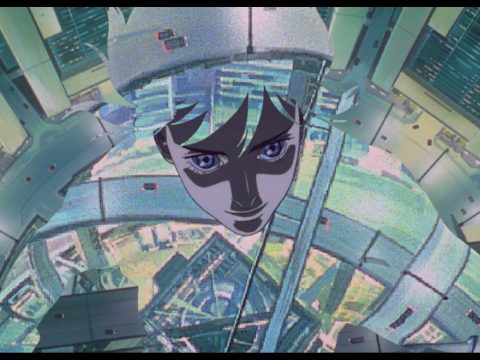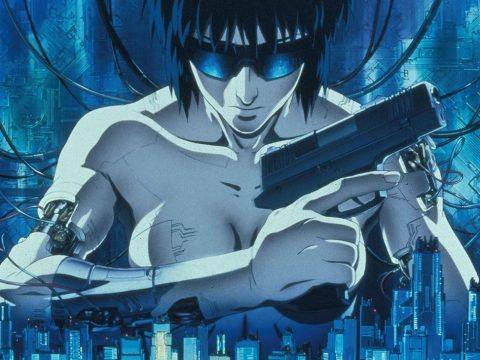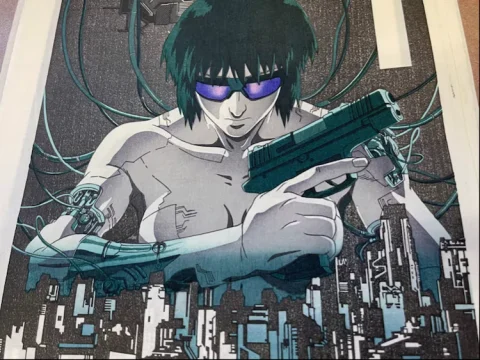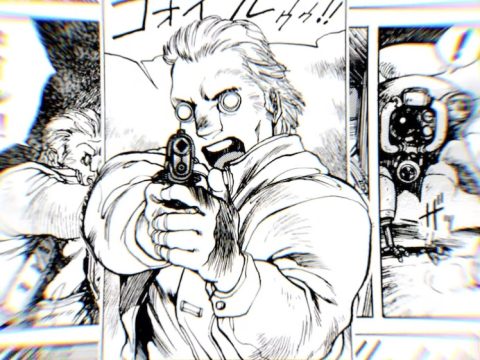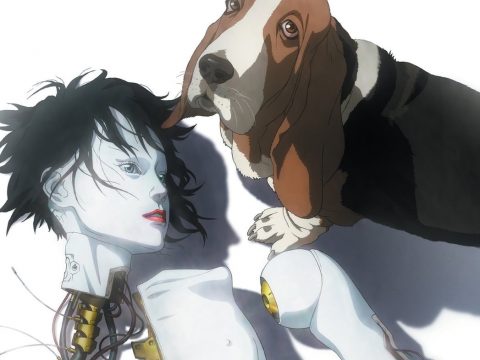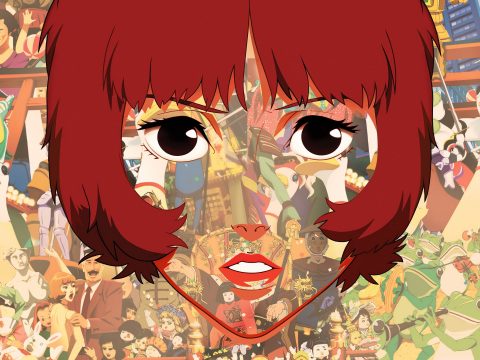Looking at Ghost in the Shell now, it’s hard to see past that massive media franchise that’s known so very well at this point. Thanks especially to the GitS activity of recent years—with the Stand Alone Complex series receiving meaty fanfare, spawning a follow-up and a film—Shirow Masamune’s original creation seems like a distant memory. In an effort to tap into our collective brain, the manga that started it all has been reprinted, published in America by Kodansha Comics, ready to show us once more via crystal ball exactly why we should all fear the fully-connected future.
If this world is still new to anyone out there, the story follows Motoko “The Major” Kusanagi, one of a handful of agents assigned to track down cybercriminals exploiting all of the latest technology for their own ill intent. These terrorists aren’t just assassinating people and blowing up buildings, they’re infiltrating machine-mangled minds, jacking fresh cybernetic bodies, and in general doing all the things hackers do in movies but on a higher tier of technology.
The individual chapters play out like pure procedural action/drama for the majority of the book, with Kusanagi and her fellow Section 9 agents crashing—often with a handful of explosions and flying prosthetic limbs—the capers of would-be terrorists. Those raised on Mamoru Oshii’s 1995 feature will start to feel more at home once the Puppeteer is introduced, in a brain drain story that acts as a solid closer to all of the not-so-heady action that preceded.
Shirow is a lot like GitS‘s own Batou, in that he loves interjecting his personal opinion on a lot of matters in the story. If it wasn’t already apparent, the scattered footnotes that act as remarks on remarks showcase Shirow’s meticulous nature. When he’s not over-explaining himself, or commenting on what the true intentions of a character’s words were, he’s clarifying minute details about weapons, from their function to their basic structure and class.
That brings us to the technology of Ghost in the Shell, which is thorough almost to a fault. I haven’t heard the term “micro machines” thrown around this much since Saturday mornings in the ’80s. I don’t know if it’s the actual application of the technology that’s impressive, or just the way it manages not to seem as terribly dated as, well, the “technology” of most twenty-year-old comics.
A lot of this can be attributed to the artwork, especially in the way the action is presented. Even if a car in Ghost looks like a used Hyundai, there’s something vaguely futuristic about the way it moves; like how Batou’s always seems to be dipping to one side, conveying constant movement in a world that carries weight. Of course, once you hop in you can spot all the vehicular amenities we enjoy today, extra-large GPS screen included. In the end, for all we know of this future Shirow could just add a thousand tubes and wires to something and call it tomorrow’s tech, but it works.
He draws women and machines with the same fetishistic eye for detail. I tell ya, the reasons why Oshii was the perfect choice to adapt this series for the big screen just pour off the page. It’s not all oiled robo-chicks and blocks of expository text, though. Shirow isn’t without a sense of humor, and in general I think the manga does a better job of balancing the tone. It also isn’t without its cheeseball moments, for which I’m always grateful. Some dialogue would be just as at home in a really great straight-to-DVD action flick. Kusanagi dryly delivering a humdinger to the enemy at the business end of her sidearm: “Bye-bye, terrorist… If you’ve got a problem with this world, make sure you stay in the one you’re going to… Hell.”
BLAM! Who can argue with that? The only thing seasoned vets of this material may argue with, in fact, is the decision to excise Kusanagi’s steamy, drug-fueled, girl-on-girl-on-girl-on-boat exploits once more. I’m pretty ambivalent when it comes to its exclusion; I think the images are permanently etched in my mind anyway.
In a franchise full of movies, television episodes, novels, and videogames, Shirow Masamune’s original Ghost in the Shell manga still sits atop the pile as far as I’m concerned. It often draws that perfectly fine line between crass and class, all while loading pages with information and some really deliriously detailed artwork. Anyone that hasn’t had a chance to read previous editions should take this opportunity, because the content certainly matches the asking price.
Publisher: Kodansha Comics
Story & Art: Shirow Masamune
Rating: M Ages 18+


